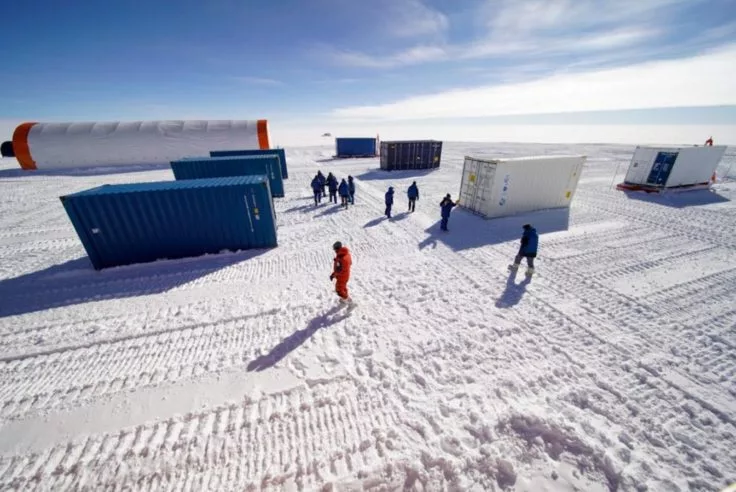To learn more about the Earth's climate and environmental history, a research team has begun an €11-million (US$12.9-million) project with the hopes of collecting the oldest continuous ice core in Antarctica, providing a record of the climate spanning some 1.5 million years.
Ice cores, especially in the Arctic and Antarctic regions, are a powerful tool for understanding past ages. As snow falls on polar ice caps, each layer accumulates year by year, getting packed down into dense ice and leaving behind a series of frozen, sealed snapshots of the conditions that formed them that can be accurately dated.
To get access to these glimpses back in time, the Beyond European Project for Ice Coring in Antarctica (EPICA)-Oldest Ice project funded by the European Commission is being carried out by the Institute of Polar Sciences of the Cnr (National Research Council of Italy) and The British Antarctic Survey (BAS).

The present seven-year project began in 2019 and the drilling campaign has just begun. It will continue into January of next year at a rate of 170 m (558 ft) per week on the Little Dome C area of East Antarctica, 40 km (25 miles) from the Italian-French Concordia Station. According to BAS, this isn't just a matter of setting up a drilling rig and switching it on because the site is at an altitude of 3,233 m (10,607 ft), where the summer temperature averages a chilly -35 °C (-31 °F). So a lot of infrastructure work, including drill system testing and building a temporary snow cave to store core samples, needs to be carried out beforehand.
Older ice samples have been recovered before elsewhere, with the oldest dating back 2.7 million years, but these were collected closer to the surface of the ice after being pushed upward by the natural flow of the glaciers. What Beyond EPICA-Oldest Ice is looking for is a continuous record from the fresh surface back to the earliest time possible, collected as a single column when the cores are reassembled.
"During our previous EPICA project, which ended in 2008, we managed to extract and analyze an 800,000-year-old ice core," says lead scientist Carlo Barbante. "Now we are trying to travel back further in time because if we are to gain a correct perspective on what the world is currently experiencing with climate change, and adopt suitable mitigating strategies, we must look back even further – which is what we are trying to do in Antarctica with Beyond EPICA."
The hope is the coring project will not only provide new understandings of the atmosphere, such as the ratio of greenhouse gases in the past, and the climate in ancient eras, but also about the structure of the ice cap and the topography of the bedrock that it rests on.
Begun in the 1990s, EPICA has drilled a series of core-collecting holes in east Antarctica, with the first reaching bedrock at 3,260 m (10, 996 ft) under the ice cap in six years, and a second at Kohen Station in 2006 reaching a depth of 2,760 m (9,055 ft). Though the second hole was shallower, the ice accumulation in the area was slower, so the oldest ice recovered dated back to 800,000 years.
The video discusses EPICA-Oldest Ice.
Source: British Antarctic Survey





